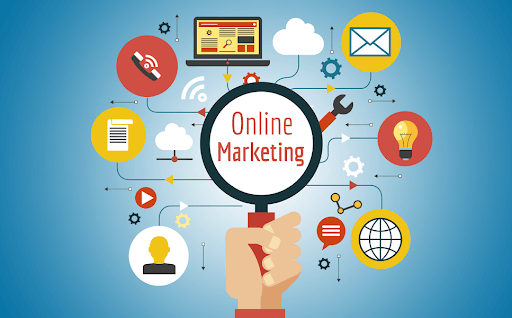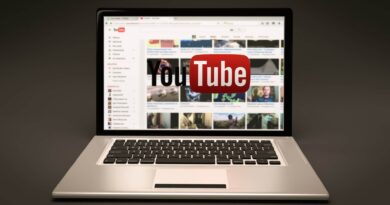What is digital marketing or online marketing?
Surely the names digital marketing or online marketing are familiar to you. But, are you clear what they mean? We tell you in this post.
How online marketing was born: from web 1.0 to web 2.0
In its beginnings, online marketing was based on 1.0 web pages and was a translation of advertising from traditional media (television, radio, paper media …) to the first web pages, which did not allow a bidirectionality in communication with users. The advertising companies were in full control of the message and limited themselves to exposing it to the audience.
In addition, the advertising of the web stage 1.0 was limited, in most cases, to reproducing a showcase of products or services in the form of an online catalog . Even so, this type of advertising already pointed out interesting virtues , such as the potentially universal scope, the possibility of updating the contents and the combination of texts, images and, little by little, also multimedia formats.
Marketing courses teach strategies for influencing customer behavior throughout the customer lifecycle. Learn fundamentals like creating a marketing strategy, brand building, advertising and budget allocation, and leveraging digital and social media channels to reach your business goals.
But, in a few years, the revolution came . A frenzied technological development allowed the massive introduction of a higher level internet. Web 2.0 was born and, with it, marketing 2.0 (as digital or online marketing is also known today). And often change!
From that moment on, it became possible for all users to share information easily thanks to social networks, forums or platforms, allowing the almost instantaneous exchange of pieces that were previously impossible, such as photos and video.
The Internet became much more than a means of searching for information and became a great community . Currently, the network is only understood as a means of exchanging information in two directions . Feedback is, therefore, total and fundamental between brands and users, with the pros and cons that this entails.
The tools of digital marketing
Digital marketing puts at our disposal a series of tools of great diversity, from which they can be carried out from small actions at practically zero cost to complex strategies (and obviously more expensive) in which infinite techniques and resources can be combined .
These are the main ones:
- Web or blog: Without a doubt, a web or a blog are two of the main tools from which to centralize a digital marketing or inbound marketing campaign (digital strategy to attract users and convert them into customers by generating value content and non-intrusive).
However, the use of a website or blog as the central axis does not imply exclusivity, quite the contrary. It is possible to use, in a complementary or parallel way, other digital actions to give greater visibility to campaigns: social networks, video platforms or forums, etc.
Once you are clear if you want to have a website, a blog or both, keep in mind that you will have to make other decisions. For example, what domain will you use, where will you host your page (we always recommend betting on Hostings from Spain ), what will the site’s architecture be like, what content will it have, how will you create them, what techniques will you use to get users to reach your page. ..
- Search engines : Search engines, such as Google, Yahoo or Bing, are tools that allow internet users to find content related to what they are looking for.
In order to successfully position a page or blog in the top positions of search engines and get visitors, it is essential to carry out organic positioning (SEO) or paid (SEM) actions in your online marketing strategy. - Display advertising: It is the most traditional branch of digital marketing . It could be considered the billboard for the digital medium. These are advertisements (banners) of different sizes and formats (texts, images, graphics, videos …) that occupy a space on internet sites in an attractive and striking way.
- Email marketing . This heir to the classic mailbox is possibly the most veteran but still effective tool because she has known how to adapt to changes and her ability to work in combination with other strategies, such as follow-up and lead nurturing .
Email marketing can be done to own or external databases, from which messages are generated in the form of newsletters, newsletters, catalogs, courses, etc. - Social networks: These platforms, as you know, have not stopped growing and gaining popularity since the advent of digital marketing. In addition, they have been able to adapt perfectly to the changes and demands of users and consumer habits.
Social networks are completely effective for content dissemination, as well as for creating a brand community, branding and even online shopping, crisis management and customer service.
In addition, in many of them (Facebook, Twitter, LinkedIn, Instagram, etc.) there is also the possibility of launching segmented online advertising campaigns, which can be a good complement to any online strategy.
The advantages of digital marketing or online marketing
Digital marketing is an essential strategy for brands due to the great opportunity for growth, positioning and sales or customer acquisition that they represent .
Potential customers, or at least the vast majority, are constantly connected to the internet from the computer and, in recent years, also through their mobile phones or tablets.
This context has fostered a wide range of advantages of digital marketing, including:
- Affordable costs . Online marketing is affordable in terms of budget, especially when compared to traditional marketing channels, such as television, radio or the press.
- Greater capacity for control, optimization and correction of campaigns due to the collection and possibility of real-time consultation of the results obtained, in addition, exactly.
- Great flexibility and dynamism . With the possibility of carrying out tests and changes on the go depending on the results obtained and the behavior of users regarding a campaign.
- It allows a very specific, personalized and precise segmentation. In an online marketing campaign, the company can segment its campaigns taking into account the sociodemographic, psychological data of the users, as well as according to their behavior on the internet.
- It allows an exact measurement of the campaign . Results obtained, benefits, return on investment (ROI), etc.
If you want to know other benefits of digital marketing, you can check our post What are the advantages of digital marketing? .
After this introduction we hope that it has become clearer what it means and, above all, what it means to do digital marketing or online marketing today. So we would like to know your opinion. Do you have any questions about how to apply it to your project? Do you know more advantages or ways to optimize your campaigns? Tell us about it!



